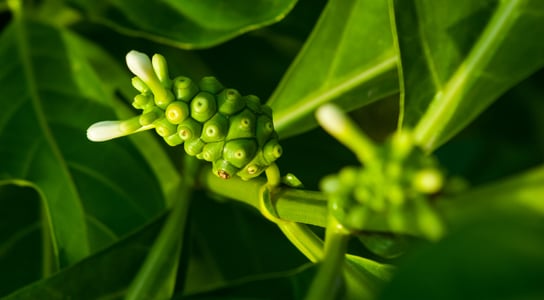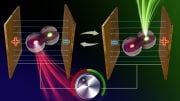
Plant dye purpurin could be used to produce eco-friendly and sustainable lithium-ion batteries. Credit: Thongchai-tjn/Shutterstock
Purpurin (1,2,4-Trihydroxyanthraquinon), a nontoxic dye used to color fabric in vivid oranges, reds, and pinks, could also be used to create eco-friendly, sustainable, lithium-ion batteries.
The scientists published their findings in the journal Scientific Reports¹. The dye comes from the roots of a climbing herb known as the madder plant (Rubia tinctorum). The first madder roots were boiled more than 3,500 years ago to extract purpurin. It’s never been thought that this dye could be used to store energy.
Most rechargeable lithium-ion batteries require cobalt. 30% of the cobalt produced in the world is used in battery technology. Cobalt is expensive to mine, and natural supplies are finite. Fabricating and recycling lithium-ion batteries made with cobalt demands high temperatures and a lot of energy, as well as pumping 72 kg (159 lb) of carbon dioxide into the atmosphere for every kilowatt-hour of energy in the batteries.
Purpurin and its relatives have electron-rich molecular rings that can pass electrons easily. It’s also easy to make purpurin into an electrode, cheaply at room temperature. Dissolving the dye in an alcohol solvent and adding lithium salt is all that is needed. Another positive is that growing madder would soak up carbon dioxide, not generate the global warming gas.
The batteries created with purpurin perform similarly to lithium-ion batteries. One of the weaknesses is that the electrolyte material used in lithium-ion batteries would break down purpurin. However, researchers think that they will be able to find a green alternative.
Reference: “Lithium storage mechanisms in purpurin based organic lithium ion battery electrodes” by Arava Leela Mohana Reddy, Subbiah Nagarajan, Porramate Chumyim, Sanketh R. Gowda, Padmanava Pradhan, Swapnil R. Jadhav, Madan Dubey, George John and Pulickel M. Ajayan, 11 December 2012, Scientific Reports.
DOI: 10.1038/srep00960









Chlorophyll is the first photo electric molecule found in nature doing photo synthesis by firing electrons from water molecule. This article suggests that a plant dye Purpurin will mimic this act and form the basis of photo electric cell from organic matter instead of searching for metallic ions like lithium and cadmium. Very good experiment indeed. Thank You.